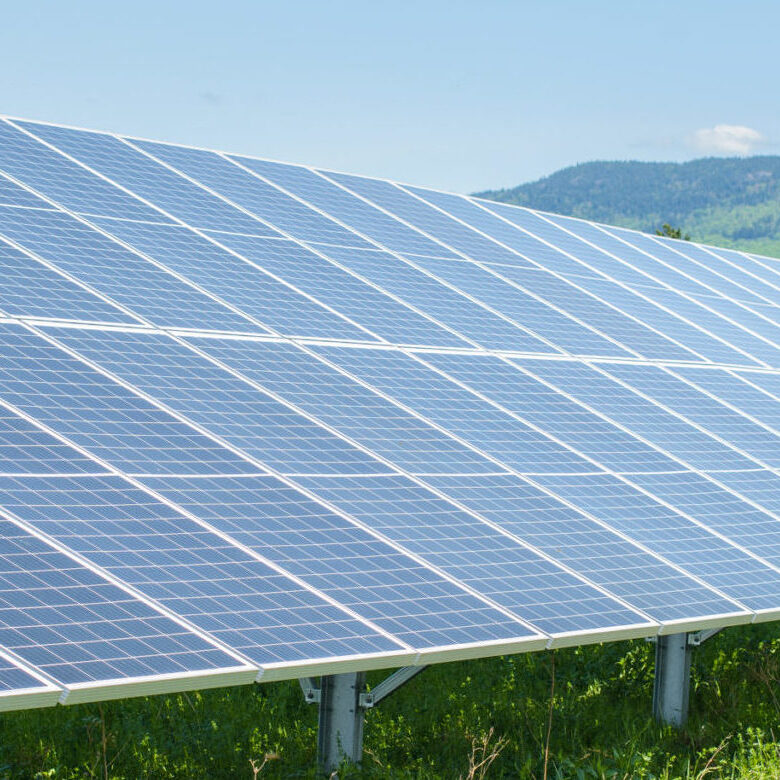Recently, a tariff petition from a tiny US-based solar panel manufacturer threatened to bring US solar development to a halt. Auxin Solar1 requested that new tariffs of up to 250 percent2 be levied on solar imports from Malaysia, Thailand, Cambodia, and Vietnam—countries that accounted for over 80 percent of all solar panel imports in 2021.3 As a result, many new US solar projects were stalled, or even scrapped, as manufacturers facing the risk of new tariffs considered exiting the US market altogether.4
A week ago, the Biden administration stepped in to bring some relief, instituting a two-year moratorium on solar tariffs from these countries and invoking the Defense Production Act to boost domestic production of solar panels.5
This is a step in the right direction, as we absolutely need to encourage solar energy development—while at the same time encouraging US solar panel manufacturing—to mitigate the climate crisis. We are over reliant on Chinese production, which makes our supply chains vulnerable to trade wars and global pandemics, but that reliance is not going to end overnight.
The US used to be a world leader in solar manufacturing. American engineers invented the solar cell6 in 1954 at Bell Labs. In the 1980s, the US spent more on solar research and development7 than any other country in the world. As recently as 2010, we were a net exporter8 of solar panels. In contrast, China didn’t begin9 manufacturing solar panels until 2002. Yet substantial government incentives allowed China’s solar power market to grow dramatically: The country became the world’s leading producer of solar panels in 2010.10
This coincided with a precipitous decline in panel production in the US. In 1990, US firms produced 32 percent of solar panels worldwide; by 2005, they made only nine percent.11 Without the same level of national investment, we could no longer compete in the global market.
And so the tariffs began. The US accused China of providing unfair subsidies, claiming that Chinese companies were dumping solar cells12—selling them at less than the cost to manufacture them—to drive out competition. In 2012, the US placed its first13 tariffs on Chinese solar cells and modules. In 2018, the government instituted the Section 201 tariffs to give domestic manufacturers temporary relief from the “serious” injury14 that imports were causing them. This past February, President Biden eased some restrictions, but renewed the Section 20115 tariffs for four more years.
However, tariffs have not historically resulted in increased domestic solar panel production; deterrents to trade abroad don’t make up for lack of investment at home.
Imagine if the US had made the same effort as China to support a domestic solar manufacturing industry. We would be more competitive in global markets. We would have more cheap solar power available at home. And, in a global pandemic, we would be less reliant on foreign exports and energy.
It’s also worth noting that most solar jobs in the US are associated with building projects, not with manufacturing solar equipment (which accounted for only 31,000 jobs, or 13% of domestic solar industry jobs16 at the end of 2020). Without the Section 201 tariffs, the US would have installed 11% more solar, employed 62,000 more people, and had $19 billion more in investment,17 according to the Solar Energy Industries Association, a US solar trade group.
In addition to ending tariffs, we should be offering incentives to encourage manufacturing in the US. Senator Jon Ossoff’s proposed Solar Energy Manufacturing for America Act18 offers tax credits to US solar manufacturers, and the America COMPETES Act19 authorizes $3 billion to fund the establishment of a domestic solar manufacturing supply chain. Plus, investing in solar energy has been a winning proposition for taxpayers. Since 2016, no solar project that was approved for funding from the Department of Energy’s Loan Programs Office has missed a payment.20 These projects are projected to generate a minimum of $5 billion in interest21 for taxpayers. They’ve already reduced carbon emissions by an amount equivalent to taking 14 coal-fired power plants offline for a year.
Greenbacker joins the solar industry in expressing relief that the Biden administration has taken action, and we’re thrilled that the pause on tariffs has gotten stalled projects moving again. But these steps should be just the beginning.
An ambitious plan to cultivate US solar manufacturing will bring jobs home, decrease our reliance on imports, and meet the climate crisis with carbon-free power. The US government has historically invested in the future, and the future of energy is renewable.
1 “An Analysis of the Auxin Petition and Commerce Investigation and Their Impact on the Solar Industry,” The National Law Review, March 30, 2022.
2 “Tariff Review Could ‘Smother’ US Solar Industry, Energy Secretary Warns,” SparkSpread, May 5, 2022.
3 Solar panel import duties, Norton Rose Fulbright, Project Finance, Keith Martin, February 28, 2022.
4 “Solar Industry ‘Frozen’ as Biden Administration Investigates China,” The New York Times, David Gelles, April 29, 2022.
5 “FACT SHEET: President Biden Takes Bold Executive Action to Spur Domestic Clean Energy Manufacturing,” The White House, June 6, 2022.
6 APS News, Volume 18, Number 4, April 2009.
7 “Why America Doesn’t Really Make Solar Panels Anymore,” Robinson Meyer, The Atlantic, June 15, 2022.
8 “US Solar Industry Was Net Global Exporter by $1.9B in 2010, According to GTM Research and SEIA,” Greentech Media, August 29, 2011.
9 “Solar Energy in China: The Past, Present, and Future (ucsd.edu),” Huizhong Tan, China Focus, February 16, 2021.
10 “When Solar Panels Became Job Killers,” Keith Bradsher, The New York Times, April 8, 2017.
11 “Why America Doesn’t Really Make Solar Panels Anymore,” Robinson Meyer, The Atlantic, June 15, 2022.
12 “U.S. Slaps Tariffs on Chinese Solar Panels,” Keith Bradsher and Diane Cardwell, The New York Times, May 17, 2012.
13 “U.S. sets new tariffs on Chinese solar imports,” Matt Daily, Reuters, May 17, 2012.
14 Understanding Safeguard Investigations, United States International Trade Commission.
15 “Biden admin eases Trump-era solar tariffs but doesn’t end them,” Jarrett Renshaw and Nichola Groom, Reuters, February 4, 2022.
16 “To understand why Biden extended tariffs on solar panels, take a closer look at their historical impact,” The Conversation, April 6, 2022.
17 The Adverse Impact of Section 201 Tariffs, Solar Energy Industries Association, December 2019.
18 “Sen. Ossoff Successfully Negotiates Inclusion of Solar Manufacturing Bill in Budget Measure,” October 28, 2021.
19 “America COMPETES Act of 2022 authorizes $3 billion for domestic solar manufacturing,” Kelly Pickerel, Solar Power World, January 26, 2022.
20 “Biden could prove the Solyndra scandal wasn’t a failure,” Tim McDonnell, Quartz, February 4, 2021.
21 “Biden could prove the Solyndra scandal wasn’t a failure,” Tim McDonnell, Quartz, February 4, 2021.

